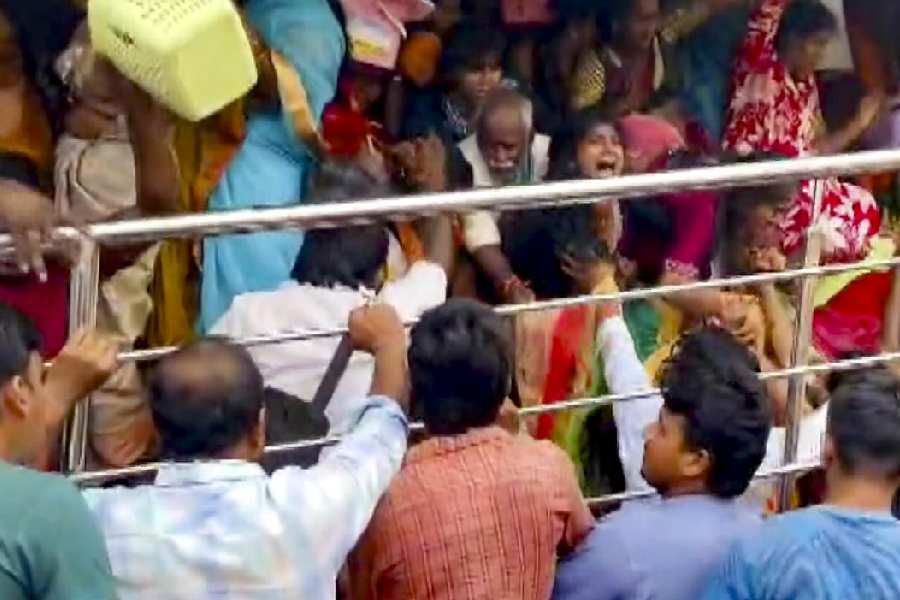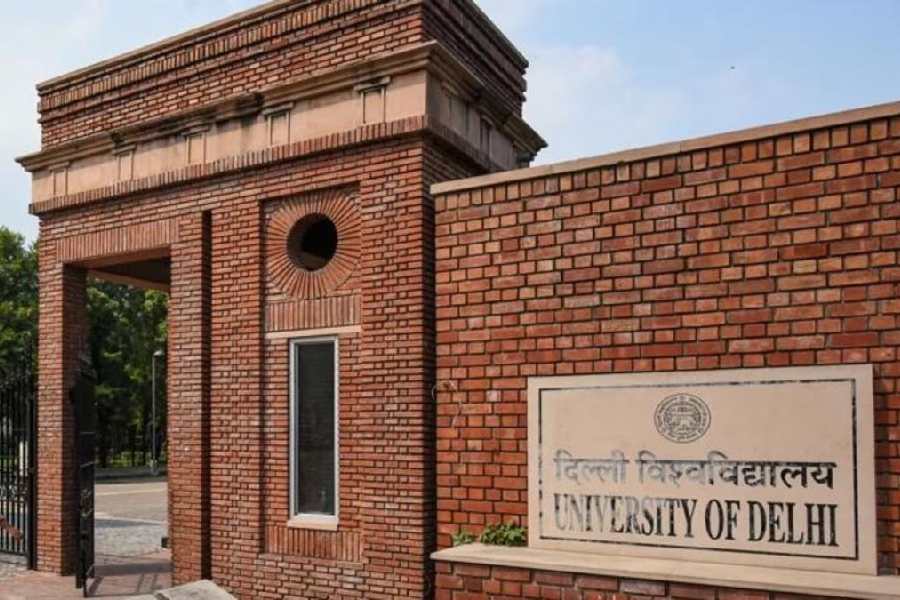.jpg) |
| A visitor watches the depiction of Sahaj Path through kantha stitch panels at Rabindra Tirtha, New Town. Pictures by Sudeshna Banerjee |
A bearded Rahmat walks by Mini’s window. Her father discovers the little girl speaking to Rahmat. The police lead Rahmat away. He languishes in prison. Rahmat goes back to the house which has been decorated for a wedding ceremony. The father brings out Mini, in bridal gear, to meet Rahmat. He also gives him some money.
Thus runs the summary of Rabindranath Tagore’s Kabuliwala, retold through seven panels stitched on cloth. The display is part of an exhibition on Tagore in kantha, organised at Rabindra Tirtha. It started on January 29 to commemorate the date on which Tagore was handed his Nobel Prize 100 years ago.
The connection between the Tagores and kantha can be traced to the 1940s when a revival was spearheaded by Protima Devi, Rabindranath’s daughter-in-law from Kala Bhavan, Santiniketan, as part of a rural reconstruction programme. “But who could think one could tell Tagore stories and poems through kantha stitch?” exclaimed Bedantika Mukherjee of BB Block, who dropped by on the first day.
The event was inaugurated by Prasar Bharati CEO Jawhar Sircar in presence of artist Shuvaprasanna, Hidco chairman Debashis Sen and kantha revivalist Shamlu Dudeja, whose NGO Self-Help Enterprise has put the exhibition together. A book on stitch art — that is what Dudeja calls kantha stitch — titled Through the Eye of a Needle was also launched.
Sircar recalled his long association with baluchari and kantha stitch since the time he was in charge of Manjusha in Bengal. “Kanthas used to be stitched by mothers and grandmothers of Bengal. The art took a beating because of Partition but is being revived again. This exhibition is a praise-worthy effort,” Shuvaprasanna said.
Dudeja recalled seeing kanthas at a craft fair in 1986. She had learnt stitching from a craft teacher in school and used to stitch designs on sleeves of her mother’s blouses. “At the fair, I asked the women to stitch something for me on three white saris. They were bewildered at first.”
That is how the kantha crusade started. Now 1,000-odd women from a village in South 24-Parganas work for her. Of them around 100 women contributed to the Tagore project.
“This exhibition has toured 10 countries in Europe but this is the first time we are exhibiting in this part of Calcutta,” she said.
Fifty panels are on display, including series on Sahaj Path, Chandalika, Shyama, Chitrangada and Ghare Baire. There are panels on Tagore songs and poems too. “The women conceptualised it on their own. Though these are meant to be wall-hangings we also take orders for cushion and tray covers,” she said.
The smaller panels are selling for Rs 4,000 each while the bigger panels on themes like festivals of Bengal or Durga Puja cost Rs 15-18,000. The exhibition is on till February 12, from noon to 6pm, except Mondays.
 |
| Prasar Bharati CEO Jawhar Sircar with Shuvaprasanna (centre) and Shamlu Dudeja after the inauguration on Wednesday |
 |
The Nobel Prize for Tagore (right in kantha stitch) was declared on November 13, 1913. He could not attend the ceremony in Stockholm on December 10 but sent a telegram accepting the prize, which was received by the British charge d’affaires on his behalf. On January 29, 1914, the medal and citation were handed to him by Lord Carmichael, Governor of Bengal, in Calcutta











